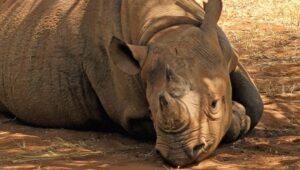Size
3,245 km² (1,240 mi²)
Founded
1951 (Game Reserve) | 2006 (National Park)
Best time to visit
All year-round
Mkomazi National Park, nestled in northeastern Tanzania between Moshi and Tanga, offers a breathtaking landscape framed by the towering Pare and Usambara Mountains. On clear days, the majestic Mount Kilimanjaro can also be glimpsed from within the park’s borders.
What sets Mkomazi apart is its serene and seldom-visited environment. Though it may not boast the vast wildlife populations of some of Tanzania’s other parks, its tranquil beauty and fascinating conservation story captivate those who explore it.
Initially designated as a Game Reserve in 1951, Mkomazi’s early years were fraught with challenges. Rampant poaching wiped out its Black Rhino population, and the number of elephants dwindled to a mere 11 individuals. Simultaneously, unsustainable grazing practices and frequent fires led to severe environmental degradation, threatening the park’s ecosystems.
In 1989, the Tanzania Government intervened, enlisting the George Adamson Wildlife Preservation Trust (GAWPT) to spearhead the park’s restoration. Under the leadership of Tony Fitzjohn, protégé of conservationist George Adamson, efforts to rehabilitate Mkomazi began in earnest. Extensive infrastructure was developed, including roads, fences, and water systems. Anti-poaching patrols were instituted, and breeding programs for Black Rhinos and African Wild Dogs were launched. The local community also became integral to the park’s revival, with initiatives like ‘Rafiki wa Faru’ (Friends of the Rhinos), which educates children about conservation efforts.
Today, Mkomazi is home to a thriving population of over 500 elephants and approximately 200 free-roaming African Wild Dogs. The park also hosts species like Eland, Zebra, Buffalo, Hartebeest, Giraffe, and Warthog, as well as rare sightings of Oryx and Gerenuk. Larger predators, such as Lions, Leopards, Cheetahs, Hyenas, and Jackals, can also be found in Mkomazi, though they are more elusive.
Birdwatchers will delight in Mkomazi’s diverse avian life, with around 450 bird species recorded. Game drives often reveal Go-away birds, Ostriches, Long-crested Eagles, Hoopoes, and Bustards. Along the Umba River, one might spot Kingfishers, Flamingos, Cormorants, Plovers, and Ducks.
Mkomazi National Park remains a hidden gem, offering visitors a peaceful and enriching experience amid stunning landscapes and a remarkable story of ecological restoration.
It’s an ideal park if you want to experience vastness and remoteness. Very few visitors travel here, making it a secluded destination to take a break from the rest of the world.
Black Rhino ranged freely between Tsavo and Mkomazi. Then poaching erased them from the landscape. The Black Rhino Sanctuary reversed this situation and today you can see Rhinos at this park.
One of the longest running Wild Hunting Dog breeding programs exists at Mkomazi and they have successfully released ~200 dogs into the ecosystem. Giving you an excellent chance of seeing them.

Mkomazi National Park is open to visitors year-round, but the ideal time to experience its wildlife and scenery is during the dry season, which runs from June to October. This period offers the most favorable weather conditions, with cooler temperatures in June and warmer days in October, making it perfect for spotting wildlife.
During the dry season, animals gather around the park’s main water sources, especially the Umba River, located in the southeastern corner of the park. As the only permanent river in the region, it attracts a variety of wildlife. To help sustain the animals during this period, park authorities have built a dam, creating multiple water points throughout Mkomazi. These water sources ensure that animals remain within the park’s borders even when the landscape becomes parched, providing excellent opportunities for game viewing.
June to October
Ideal for seeing the wildlife and the rhinos at the visitors centre.
March to May
The best time for photographing Mount Kilimanjaro thanks to clear skies and green landscapes.
You might find yourself leaving Mkomazi National Park with a quiet vow to return. With its low visitor numbers, the park offers a peaceful, immersive experience in nature, framed by stunning landscapes.
While the wildlife population may be smaller than in other parks, Mkomazi’s story is one of remarkable transformation. In the late 1980s, only 11 elephants roamed its terrain. Today, around 500 elephants freely migrate between Mkomazi and Tsavo National Park, thanks to ongoing conservation efforts. A visit to the Rhino Sanctuary ensures the rare opportunity to see a Black Rhino up close, making Mkomazi a park that is as heartwarming as it is unique.

Mkomazi is an excellent place to not only see but also learn about Tanzania’s wildlife and conservation management.
Mkomazi National Park is famous for its endangered Wild Dogs and Black Rhinos. Lions, Leopards, Cheetahs, Hyenas, Jackals, Elephants, Buffalos, Giraffes and Warthogs reside here in relatively low numbers.
~450 bird species, including the Go-away bird, Ostriches, Long-Crested Eagle, Hoopoe, Bustard, Kingfishes, Flamingo and Plover, can be seen here.
Acacias, Commiphora woodlands and dry land forests are typical of the vegetation found here.


Mkomazi National Park is only 252km away from Arusha and 172km away from Moshi. This means, it is usually accessed by road. The Rhino Visitor Centre is found not far from the Zange Gate, whilst the Black Rhino Sanctuary is located near the Njiro Gate. The majority of the accommodation is located around the Zange Gate. The river is found in the south-easterly corner of the park. Whilst you are there you could visit the Pare and Usambara mountains to the south of the park to do some amazing hiking.
Welcome to Serengeti Vista Explorations WhatsApp us now